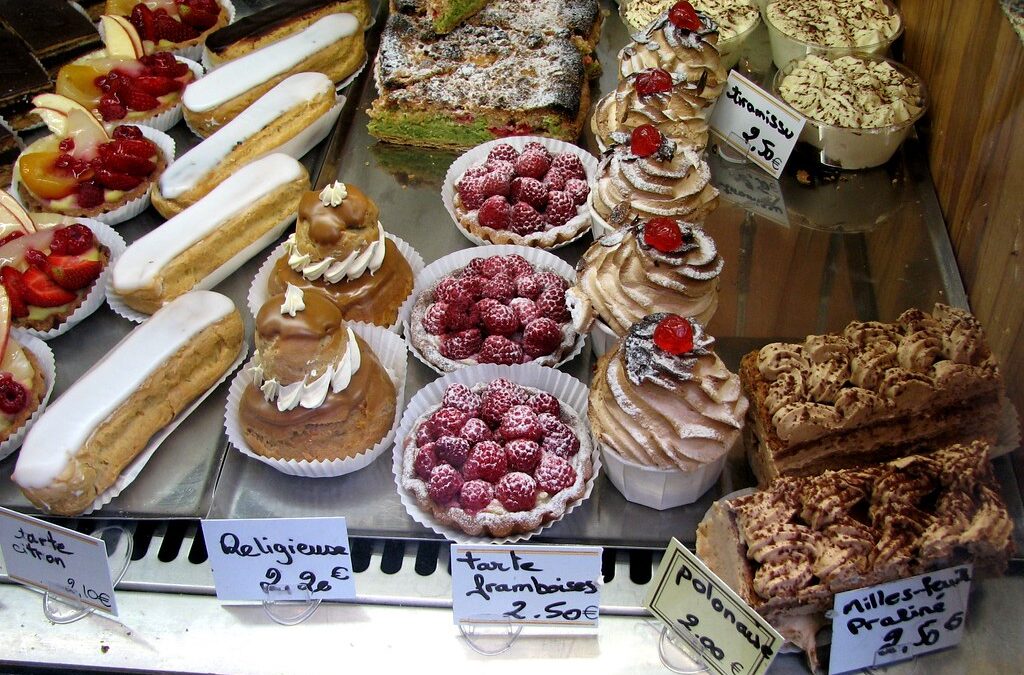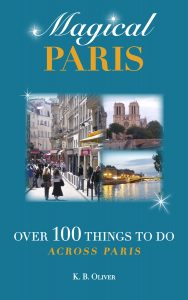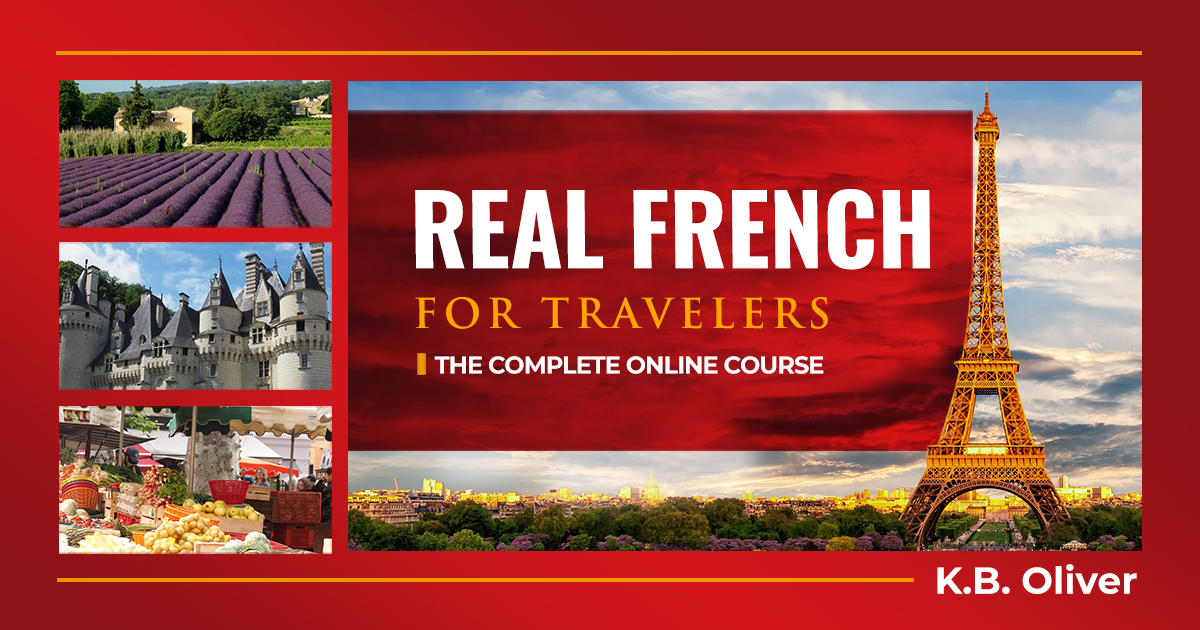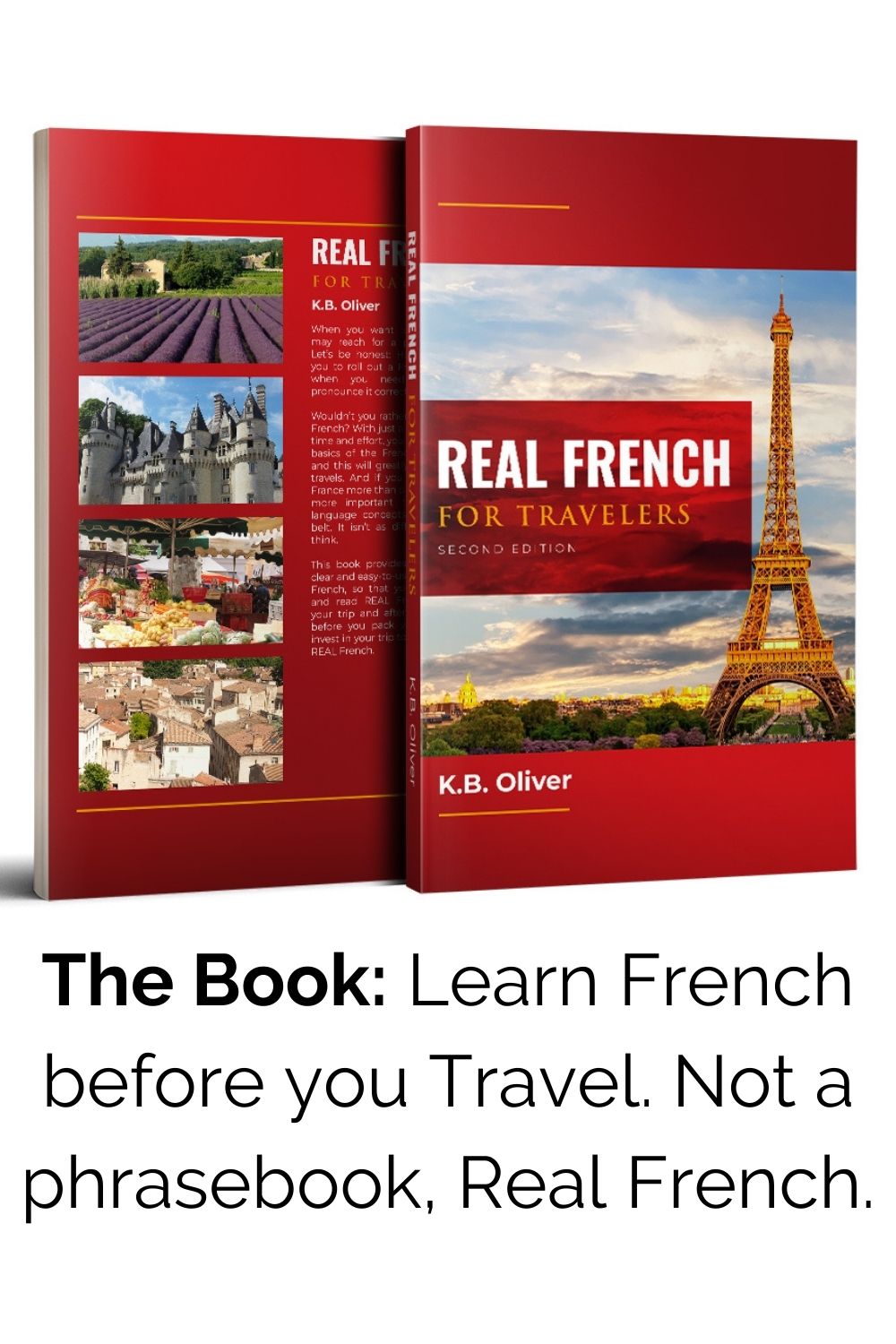10 Famous French Pastries
One of the iconic treasures visitors most seek in Paris is the French pastry. It’s known around the world for good reasons. They don’t just look good! The taste equals the artistic appearance.
There are 1300 bakeries in Paris. Most often, you’ll see a boulangerie (for breads) and patisserie (for pastry) combined. That way you can get your bread, a must for each French meal, and your dessert or “goûter”(afternoon snack) at the same place.
You’ll find French pastry and bread shops literally all over town, it’s such a stable in French culture. There may very well be more than 1300 of them.
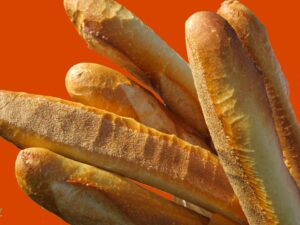
The humble but indispensable baguette
The basic unit is the baguette, served with butter, jam, and or Nutella at breakfast. This is sometimes dipped into coffee or hot chocolate. But after breakfast, the baguette has a more practical purpose, to scoop food onto a fork or spoon and to soak up sauce. Lunch and dinner baguettes are not eaten buttered.
For bread, you have many forms besides baguettes. A thin baguette is called a ficelle (or string) and a wider one is a flute (like the instrument.) Then you have various grains, seigle (rye) or pain complet (whole wheat) as well as pain de compagne, or multi-grain country bread.
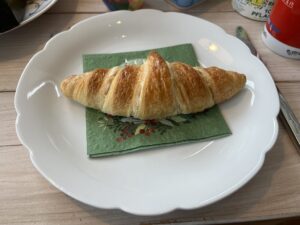
Straight croissant au beurre
Croissants are likely the second most purchased bread item after breads. Those are available with butter (au beurre) or with margarine (ordinaire). Only buy the butter croissants! You can tell by the name, but also because they are straighter than “ordinaire.”
Back to pastry.
10 Popular French Pastries
Here are some of the most popular pastries in France. These will get you started on your pastry experience and education!
- Religieuse: this word means “nun”, and the pastry itself resembles one. It’s a choux (cream puff) pastry in two parts, so you can imagine the top one as a small head, the buttercream as a collar, and the whole thing covered in chocolate. It was invented in 1856 at Frascati café in the Montmartre neighborhood. (see banner photo.)
- Paris-Brest-In the 1890s, pâtissier Louis Durand invented this pastry to commemorate the famous Paris-Brest bicycle race. (Brest is in the extreme western part of Brittany.) It is in the shape of a bicycle wheel with cream in the middle.
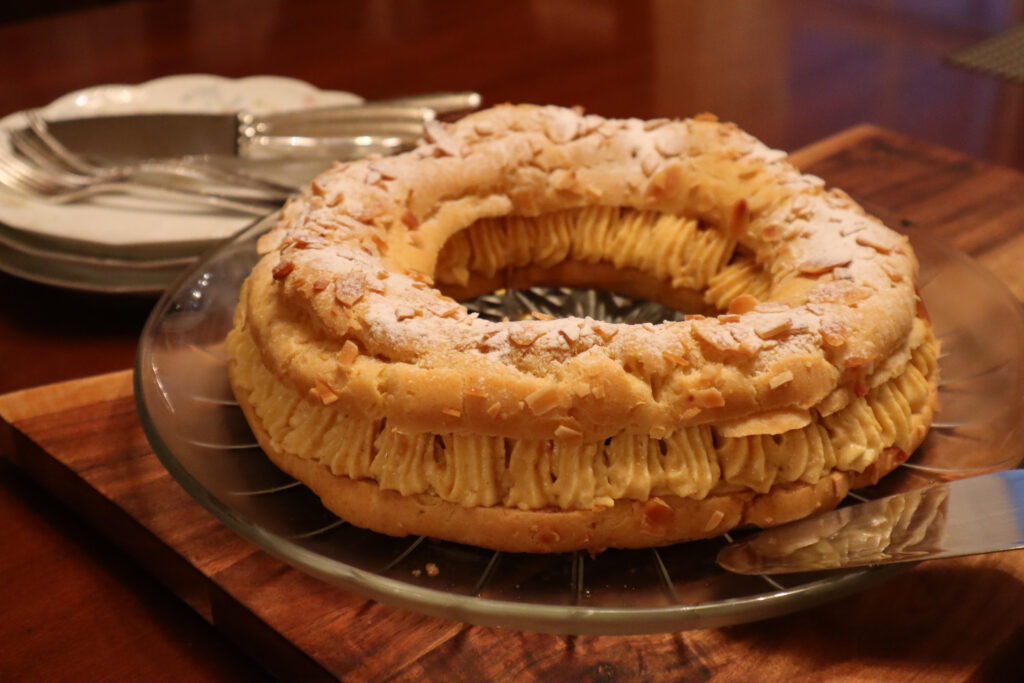
Paris-Brest
- Macaron: this is the well-loved small meringue cookie that resembles a colorful hamburger.
- Kouign-Amann: A decadent pastry from Brittany with butter, sugar, and flour. And more butter and sugar, and so on. You’ll find it
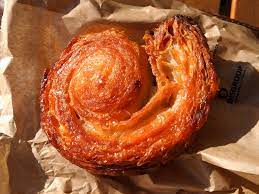
Kouign-Amann
everywhere in Brittany, and at a few select places (see below) in Paris.
- Éclair : This pastry almost needs no introduction. An éclair is a lightning bolt, so stretch your imagination on that one!
- Millefeuille : My first summer in Paris, I got addicted to these. (Later the addiction turned to mini raspberry tartes, tarte aux framboises!) Millefeuille means a thousand leaves. A leaf of pastry, that is, like filo dough. We call them Napoleons.

Millefeuille
- Opéra: This is truly decadent, filled with chocolate and mousse and covered with a chocolate frosting.
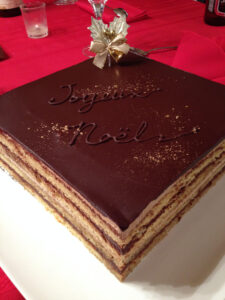
Opéra
8. Financier: The shape represents a gold bar; made with butter and almond flour. It was invented in 1890 in the Stock exchange district.

Financier
Where to Find Them
You’ll find a high number of pastry shops in the 7th district on the Rue du Bac. This will be a great place to start. Here are more places where you can’t go wrong.
10 Well-Respected Places to Try Great Pastry
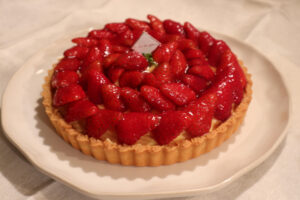
Tarte aux Fraises (Strawberries)
These aren’t the only good patisseries in Paris. Many have distinguished themselves in the media or in their reputation, so here is a sampling of those (though you can hardly go wrong!) You may very well find your favorite non-famous pastry shop near your hotel the next time you visit Paris!
Fou de Patisserie: Features a rotating selection from Paris chefs. 45 rue Montorgeuil 2nd district.
Stohrer : Again, on Rue Montorgeuil, this is the place for Kouign-Amann (a decadent Brittany specialty.)
Pierre Hermé Cambon: This famous pastry chef is a household name, particularly for creative and exotic flavors of macarons you’ll find nowhere else. (Lavender macaron, anyone?) 72 Rue Bonaparte in the 6th district.
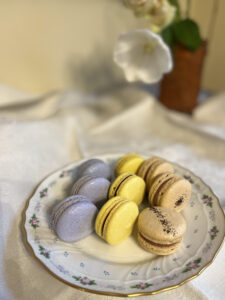
Macarons
La Durée: This traditional Parisian establishment is also well-known for their macarons. You can taste a huge variety of them and take home a boxful. Locations on 75 Champs-Elysees, 16 rue Royal, and 21 rue Bonaparte. Each shop looks like it steps out of Louis XIV’s court.
Dalloyau is one of the oldest businesses in Paris, founded in 1682 (and still family-owned!) Though there are several (and you can order online), you can start on 101 rue Faubourg St. Honore in the 8th district. This location also has a tea room and restaurant.
Mamiche: This boulangerie is all the rage with more “ordinary” (but quite delicious) fare than some of the other addresses listed here. It has several addresses and you can also get lunch there to take out. 45 rue Condorcet, 9th district.
Des Gâteaux et du Pain, located in the 7th at 89 Rue du Bac. Chef Claire Damon.
Yann Couvreur : Go here to have a traditional favorite, like an éclair or croissants in plain butter or rolled in various surprising flavors. 137 Ave. Parmentier, Paris 11th
Do you like cream puffs? Go to the place which specializes in them, Popolini at 29 rue Debelleyme, in the 3rd district. Pololini features traditional flavors like coffee and chocolate alongside more exotic ones, like caramel and rose.
Gluten-Free Treats
And for those seeking gluten-free French pastry, try Patisserie Chambelland in the 11th district (near Bastille.) Located at 14, rue Ternaux in the 11th district. It was the first gluten-free bakery in the city. At 14 rue Terneaux.
Helmut Newcake is a reference address for delicious gluten-free pastry. At 28 rue Vignon in the 9th district.
For food and pastry tours, check with the City of Paris Tourist Bureau. https://parisjetaime.com/eng/article/10-parisian-pastries-a1059
Is your mouth watering yet?
Bon appétit!
Related Posts
5 Foods You Must Try in France
7 French Specialties You’ve Never Heard Of
(See also various regional specialties!)
Photo Credits: Opéra, tarte sux Fraises, Macarons, Paris-Brest, and Financier photos were taken by Kyoko Spear. (She made these herself! See her patisserie recommendations below.*) Other photos from Creative Commons.
Learn more about visiting Paris with my classic (and first) France book…
Magical Paris: Over 100 Things to Do Across Paris (click and learn more!)
*Kyoko’s recommendations
Patisseries
Ladurée: 86 Champ (collaboration of Pierre Hermé and L’Occitane)
La Patisserie Cyril Lignac
Cedric Grolet
Bontemps
Ritz Paris Le Comptoir
Jeffrey Cagnes
Pierre Hermé
Jean Paul Hevan (Chocolatier/Pattisseries)
Jaques Genin (Chocolatier)
Patrick Roger (Chocolatier)
Boulangeries
Poilâne
Du Pain et des Idées
Le Grenier à Pain Abbesses Bodian
Cedric Grolet Opéra

